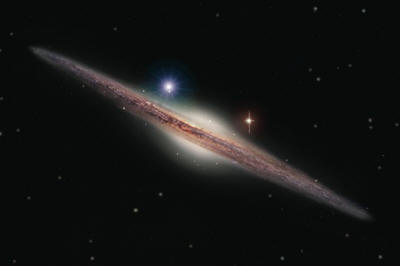|
from Wired Website
Only two sizes of black holes have ever been spotted:
Scientists have long speculated that an intermediate version must exist, but they’ve never been able to find one until now.
Astrophysicists identified what appears
to be the first-ever medium-sized black hole, pictured in an
artist’s rendition above, with a mass at least 500 times that of our
Sun. Researchers from the Centre d’Etude Spatiale des Rayonnements
in France detected the middling hole in a galaxy about 290 million
light-years from Earth.
But without finding evidence of a medium-size hole, it was a tough theory to prove.
The new discovery is the most convincing
evidence to date that medium black holes exist. Using the European
Space Agency’s XMM-Newton X-ray space telescope, the researchers
identified a radiation source that gives off X-rays 260 million
times brighter than the radiation of the Sun. Because of the source’s physical characteristics and the pattern of its radiation, the researchers conclude it must be a black hole more than 500 times the mass of the sun: not too big, not too small, and the first of its kind.
|

